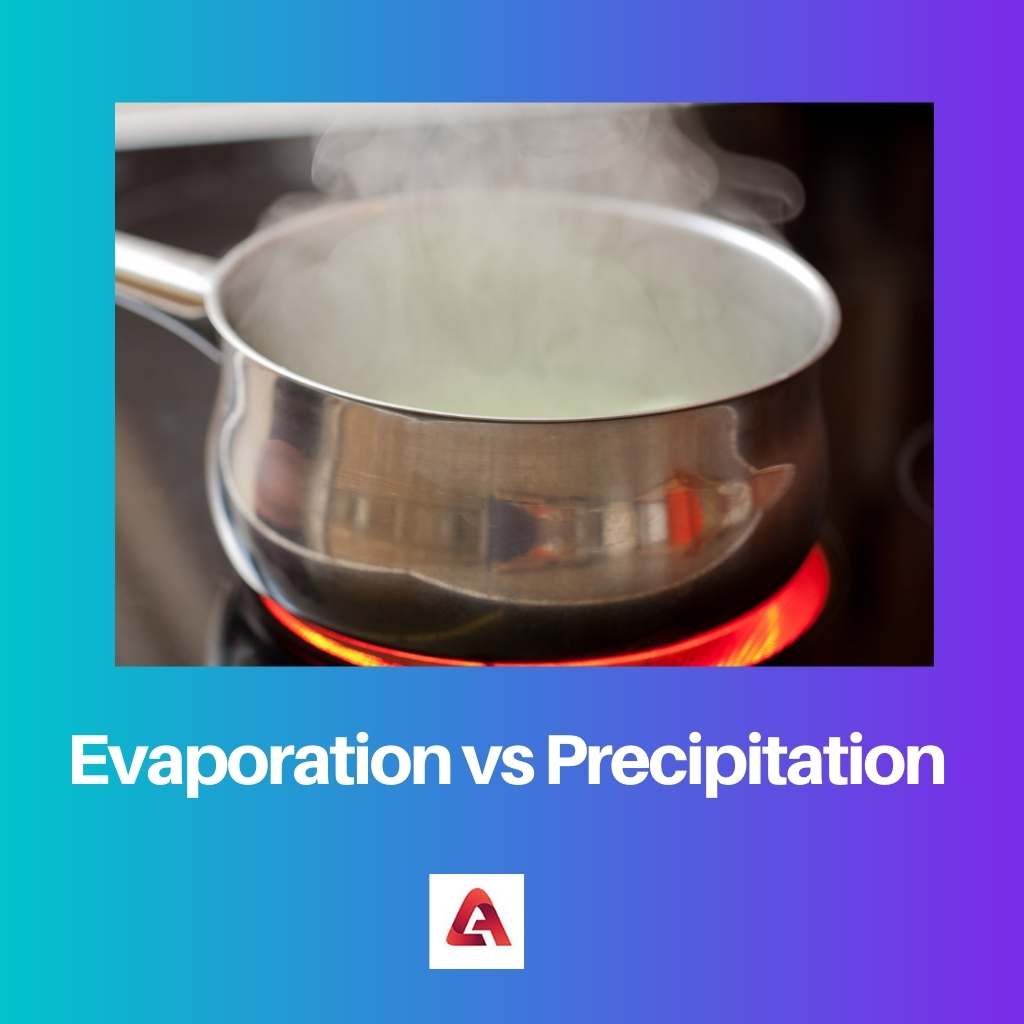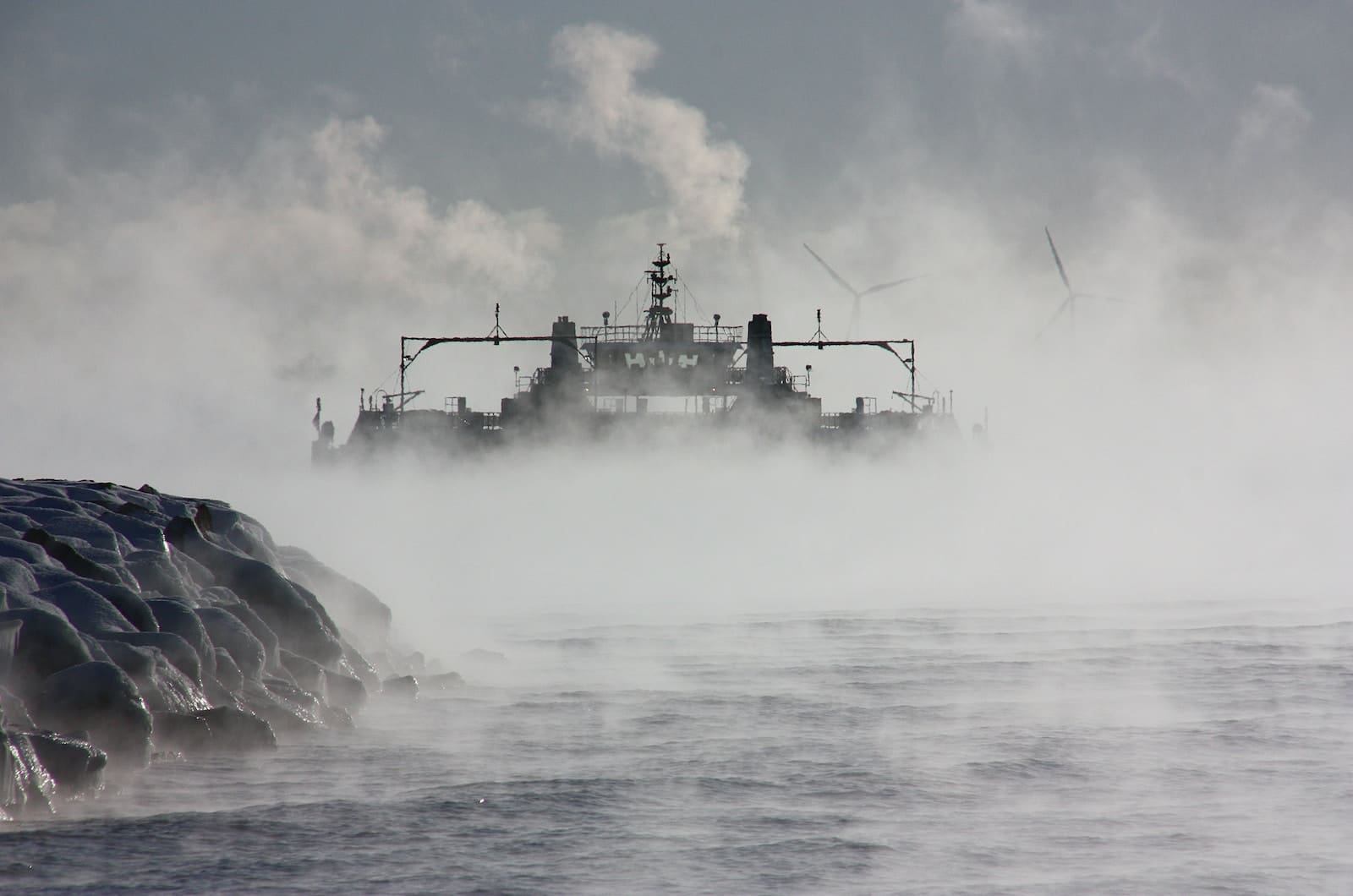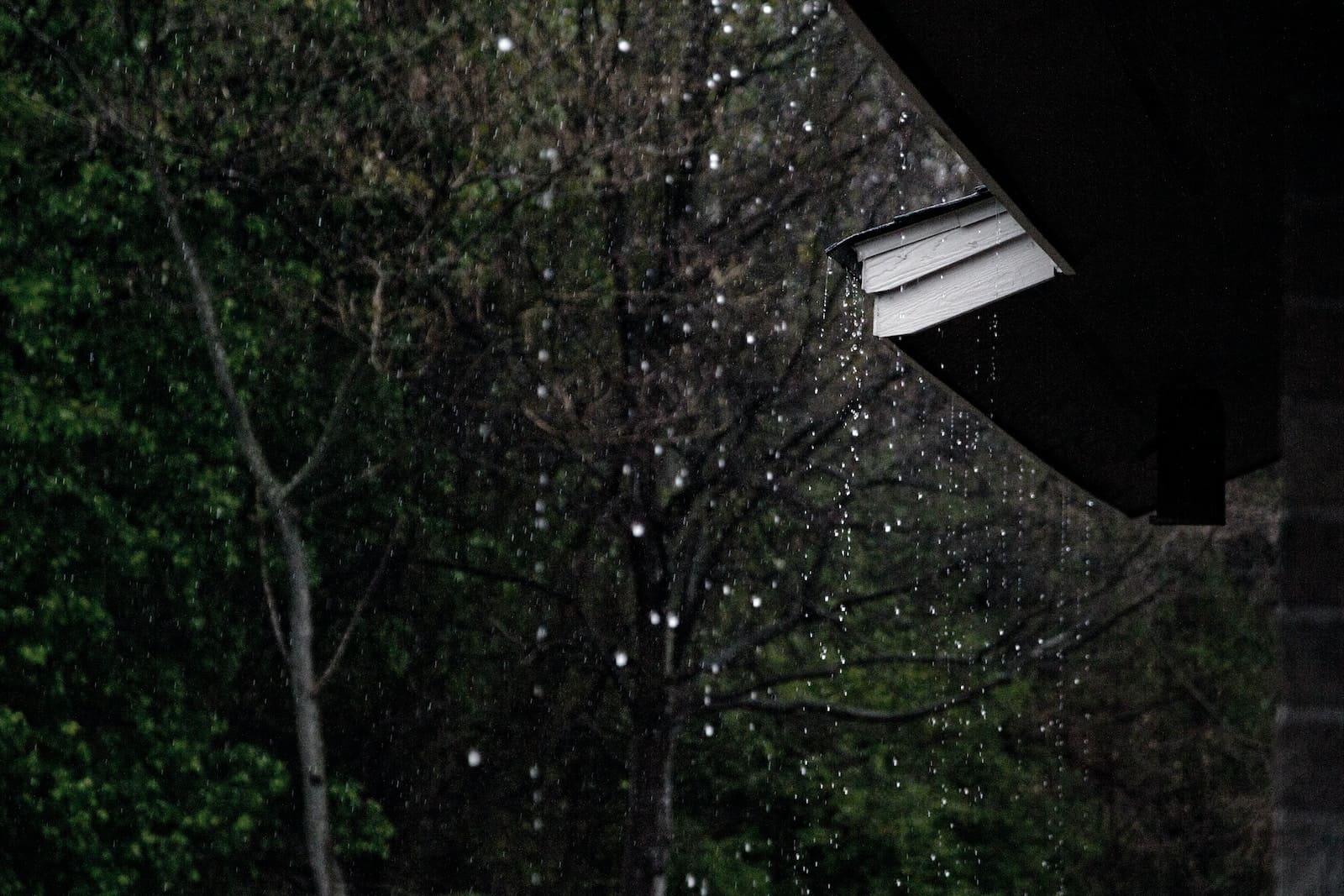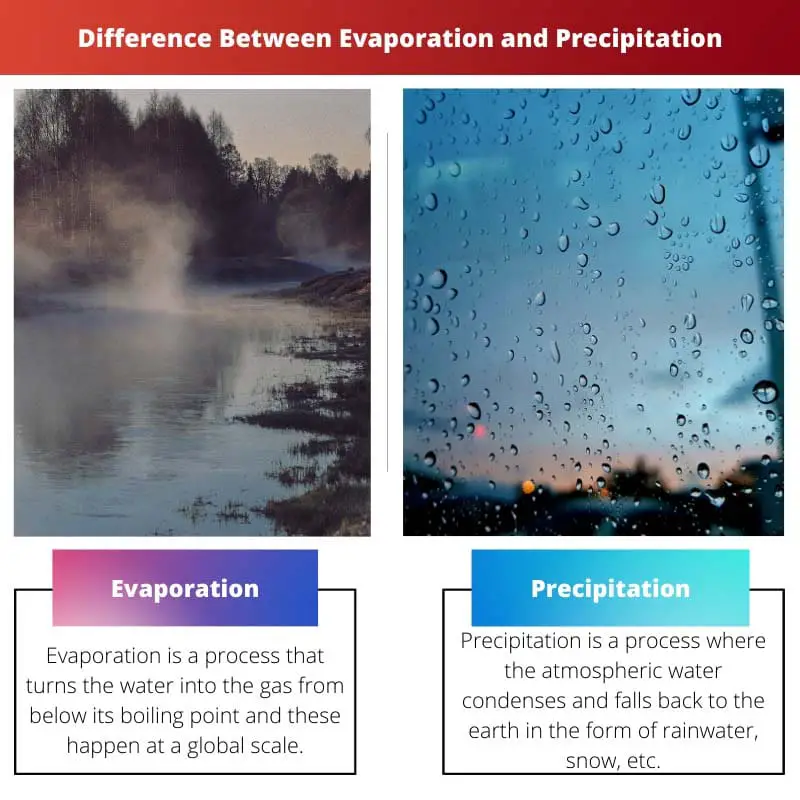Evaporation is a vaporization process in which the water or the liquid form changes to the gaseous form.
The liquid vaporized is called water vapor, and Precipitation is a process in which the water or the frozen comes down on the earth and is formed in the atmosphere.
Key Takeaways
- Evaporation occurs when liquid water turns into vapor, while precipitation is the process of water falling from the atmosphere to the Earth.
- Solar radiation powers evaporation, whereas precipitation is driven by atmospheric cooling and the condensation of water vapor.
- Evaporation reduces the water content of a surface, whereas precipitation increases it.
Evaporation vs Precipitation
The difference between evaporation and precipitation is that in the evaporation process, the liquid form changes to the gaseous form, while in the precipitation process, the water comes down to the earth which is formed in the atmosphere in the form of rainwater, snow, or any other form.

Evaporation is a process that turns water into a gas from below its boiling point, which happens globally.
As we all know that substances are present in three main forms, which are solid, liquid, and gas from this evaporation is one of them. Evaporation always occurs in pure form.
Precipitation is a process where the atmospheric water condenses and falls back to the earth in the form of rainwater, snow, etc.
Precipitation also occurs in the pure form, but when there is a large amount of pollution in the atmosphere, the rain cause will be acid rain that harms the river and lakes water and also the aquatic life.
Comparison Table
| Parameters of Comparison | Evaporation | Precipitation |
|---|---|---|
| Define | It depends on the temperature, as temperature should be high | This is the process the atmospheric water compressed came back down to earth from clouds in the form of rain or snow. |
| Depends on | It depends on the temperature, as the temperature should be high | It depends on the temperature and concentration of both of the solution |
| Sequence | Evaporation takes place before condensation and occurs at the surface | Precipitation takes place after the process of condensation |
| Role | By evaporation the surface gets cool | By precipitation, the surface gets heated. |
| Forms | It presents in the form of water vapors. | It presents in the form of rainwater, snow, drizzle, hail, etc. |
What is Evaporation?
Evaporation is the process in which liquid turns into a gaseous form, or we can say that evaporation is a way of vaporization that occurs at the surface in which liquid turns into the gas form.
This is also known as one of the important steps of the global water cycle. As there, we can see the molecules are evaporated so when they move they transfer their energy to each other based on what intensity they collide with each other.
These molecules absorb more energy when they are at the surface. At this time, the temperature from the liquid reduces or decreases, which results in the cooling or, we can say, evaporating cooling.
As evaporation increases, the atmosphere cooling, and when it cools enough, the water vapors condense back to the liquid form.
For evaporation, the molecules should present near the surface and should move incorrect direction so that they have the proper amount of kinetic energy and intermolecular force between them.
Because when the same amount of molecule evaporates, they produce less rate of evaporation, so here the kinetic energy is directly proportional to the temperature as the temperature increases, the kinetic energy also increases.
The three main parts of evaporation are heat, atmospheric pressure, which determines the humidity percentage, and air movement.

What is Precipitation?
Precipitation is known as the product of the condensation of atmospheric vapors that fall under the gravitational pull from clouds, or we can say that precipitation is any liquid that develops in the atmosphere and then fall back onto the earth.
As there are also one of the most important parts of the global water cycle, like evaporation and condensation.
The main forms of precipitation are rain, snow, fog, hail, etc. it occurs when the portion of the atmosphere reaches up to 100% of humidity, and then the water condenses and falls on the earth in the form of rain, snow, or other.
When there is less amount of rain occurring in a particular area, it is known as showers. The particles of dust and smoke are essential for the precipitation process. These particles are normally called condensation nuclei.
The precipitation always contains freshwater as they orient with the ocean water.
And when there is so much pollution in the air, the rain which is caused at that time is known as acid rain which did not harm a human directly but makes the lakes and river water acidic, which also causes damage to the aquatic animals.
The precipitation measurement is of two types liquid precipitation and solid precipitation.

Main Differences Between Evaporation and Precipitation
- Evaporation is a process that changes liquid to gas form, whereas precipitation is the process where the atmospheric water gets cinders and comes back to earth.
- Evaporation depends on temperature, whereas Precipitation depends on temperature and concentration.
- Evaporation occurs before the condensation process, whereas precipitation occurs after the condensation process.
- Evaporation cools down the surface, whereas precipitation heats the surface.
- Evaporation is present in the form of water vapors, whereas precipitation occurs in the form of rainwater, hail, snow, etc.




